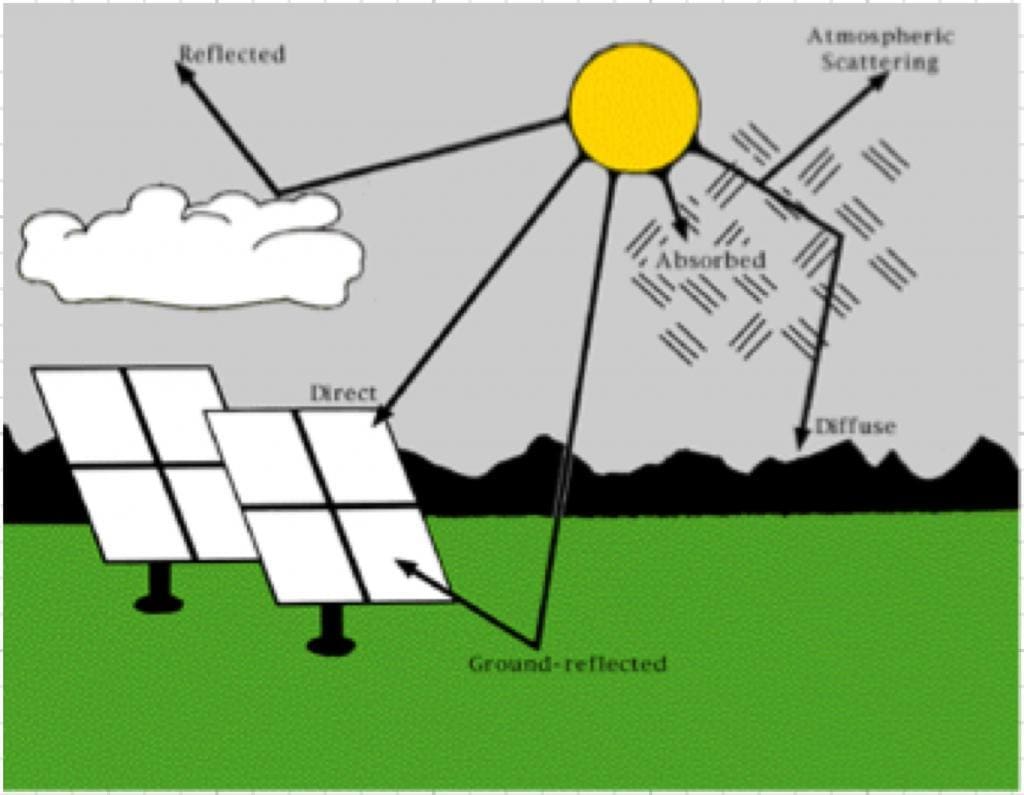Researchers at Murdoch University have developed a web-based simulator to calculate the hourly power output of photovoltaic and concentrated solar thermal (CST) power systems for south-west Australia that accounts for cloud cover.
The research is a joint effort between Murdoch University and Sustainable Energy Now, a movement to develop accessible and interactive computer simulations of renewable energy power systems for Western Australia’s main power grid, the South-West Interconnected System (SWIS).
In perfectly sunny conditions, the output of PV and CST systems is easy to estimate as it is directly related to the incident solar power. However, occasional or persistent clouds can significantly affect the amount of solar radiation that reaches the earth’s surface, making it hard to predict the instantaneous power output from PV and CST systems.
Prediction is further complicated by the fact that solar radiation has 3 different components – direct, diffuse and reflected radiation – each of which is affected differently by the weather. The distinction between the three is also important because while PV panels utilize all 3 components to generate power, CST and CPV plants mainly utilize the direct component of solar radiation.
 Image Credit: NREL
Image Credit: NREL
This weather-dependent variability is often cited as a disadvantage of solar power and is in sharp contrast to power variability from fossil-fuel generators, which is often well-known and can be controlled or offset to a large degree.
To improve prediction capabilities for solar power systems, Murdoch researchers have performed careful statistical analysis of historical daily and hourly cloudiness, rainfall and solar radiation data to develop a model that predicts the specific solar radiation received on the ground at each hour.
Crucially, the model separately calculates the three different components of solar radiation. Says Dean Laslett, the lead author of the study, “Because the model can be used to estimate all three components of solar irradiance, it’s possible to change the location of one or several photovoltaic or concentrated solar thermal systems and get an idea of how overall energy generation might change.”
Interestingly, the results generated are about as accurate on monthly, daily and hourly timescales as other similar models that use real-time weather data. Although the study is currently limited to areas in SW Australia, this ability to easily predict power output without necessarily monitoring the actual weather on site will be tremendously useful for developers, utilities and grid operators.
Best of all, the model is simple enough to be implemented on a web page. Laslett explains, “Also because our model can run inside a web browser, this ability becomes widely accessible to the general public … they can play around and see for themselves what a solar energy power system for the SWIS might look like.”
The model has been integrated into Sustainable Energy Now’s comprehensive solar simulation tool, which can be accessed online here (instructions on how to use the model can be found here). Further technical details about the model can be found in Laslett’s latest study, which is available here (link courtesy of Murdoch University).
Top Image Credit: Green Power Labs
© 2014 Solar Choice Pty Ltd
- Future of Utilities – Part 1: The death of base-load generators - 11 September, 2014
- Sharp enters energy storage market with SmartStorage - 18 August, 2014
- Phinergy extends electric car range with metal-air battery technology - 13 August, 2014